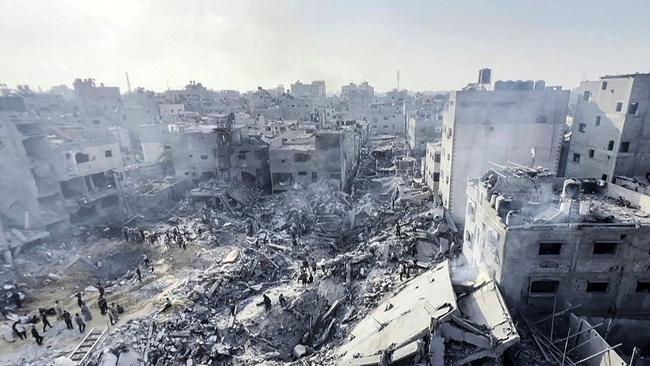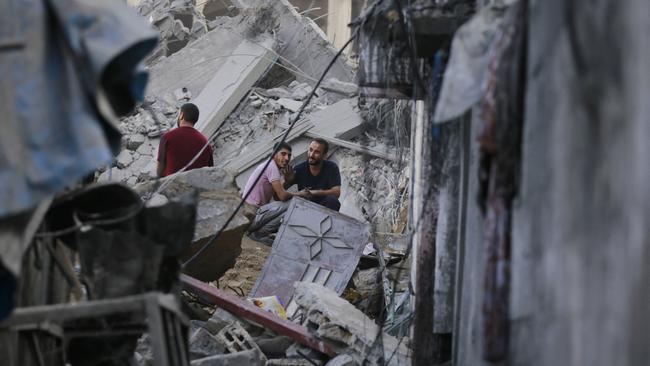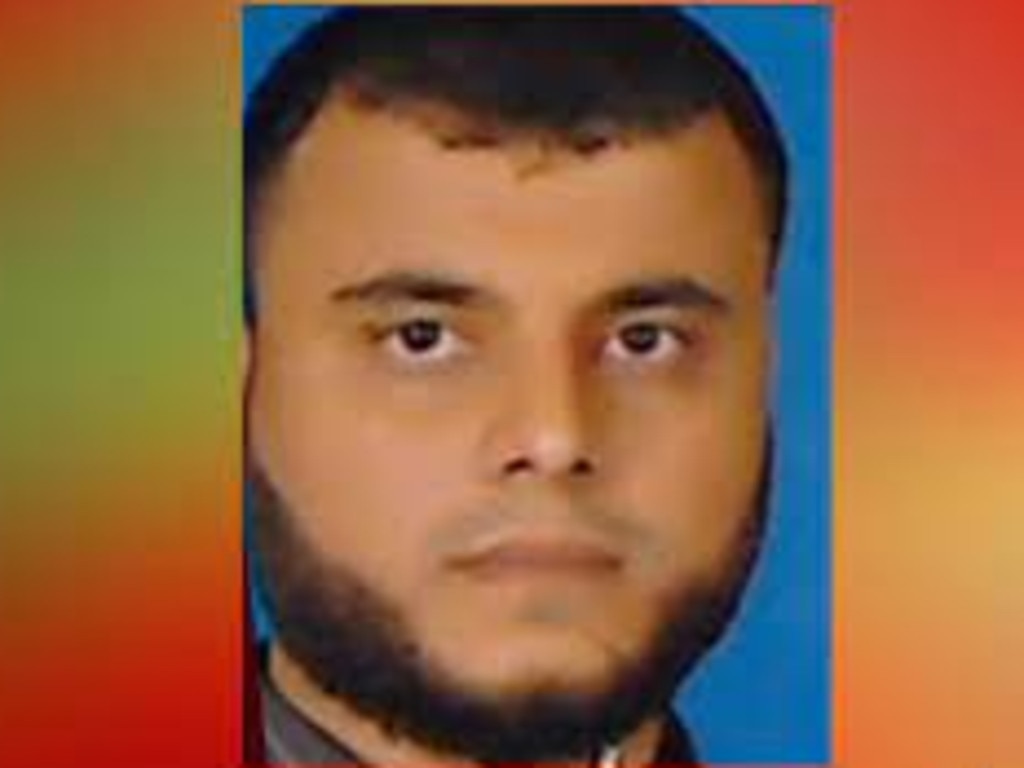Israel’s new calculus: strike Hamas at all costs
Israeli strikes on Jabalia neighbourhood is latest in a broader, more aggressive war against Hamas.

Airstrikes on a densely populated neighbourhood in Gaza this week show Israel is waging a broader and more ferocious war against Hamas, an approach that aims to destroy the Palestinian militant group but has sparked an international backlash.
The repeated strikes on the Jabalia neighbourhood — a refugee camp that has turned into a warren of permanent homes and apartment buildings — come amid a three-week-long air campaign by Israel that is the most intense in its history and rivals any aerial bombardment this century, military analysts say.
Israel’s campaign to eliminate Hamas has faced a deluge of criticism as the civilian death toll has risen and the humanitarian crisis has worsened, prompting repeated calls for Israel to agree to a ceasefire and to end its blockade.
The ferocity of Israel’s campaign has also put pressure on the U.S., which has supported Israel’s right to defend itself but has increasingly stressed the importance of minimising civilian casualties and increasing humanitarian aid.
Israel says it has hit more than 11,000 targets, with missiles, bombs and artillery, in Gaza, an area half the size of New York City that is home to around two million people. That compares to some 1,500 strikes the last time Israel fought Gaza militants in 2021.
Human rights groups have warned of a mounting humanitarian crisis in Gaza. The strikes have killed some 8,796 people, according to Hamas-run health authorities in Gaza, a number that includes both militants and non-combatant civilians. The strikes have also displaced hundreds of thousands and turned large parts of Gaza into rubble. Israel says the attacks have destroyed crucial military infrastructure and killed key leaders of Hamas, a U.S.-designated terrorist organisation.
Israel also says it has moved “significant” ground forces into Gaza. The troops appear to be digging in on the northern coastline of Gaza, where their flank is protected and can receive cover fire from Israel’s Navy, said Michael Horowitz, the Israel-based head of intelligence for the consulting firm Le Beck. Israeli troops appear to be making short raids into central Gaza to attack Hamas, and then falling back to more protected areas, he said.
The air and ground assault comes after the killing of more than 1,400 people in Israel — the worst massacre in its history — prompted Prime Minister Benjamin Netanyahu’s government to launch a war to drive Hamas from power in Gaza, where the group has ruled since 2007.
It is a far different kind of war than Israel has fought, at least since it invaded Lebanon in 1982. Its sweeping goals have shown a willingness by Israel to target Hamas’s leaders with fewer restraints than in the past — in their homes and underground bunkers in populated areas.

The attacks and broader bombing campaign underscore the delicate balance Israel is trying to strike between destroying Hamas and minimising civilian deaths in an urban area where Hamas’s military capabilities are interwoven within residential neighbourhoods and in hundreds of miles of tunnels beneath them.
Israel has defended its tactics in the air campaign, saying it has for weeks urged civilians to vacate northern Gaza to protect themselves. More than 800,000 people have left their homes, many of them fleeing south or taking shelter in hospitals, schools and international aid facilities in hopes of escaping the fighting.
In Tuesday’s attack, Israel said it used airstrikes to hit a Hamas command-and-tunnel network under Jabalia, killing the commander who was leading Hamas’s forces against Israeli forces operating in northern Gaza at that time, and who also played a pivotal role in the Oct. 7 attacks. On Wednesday, Israeli military spokesman Rear Adm. Daniel Hagari said Israel understood civilians were in the area on Tuesday and could be affected, but argued the Hamas commander, Ibrahim Biari, was a legitimate military target.
The attack caused hundreds of casualties, according to the Gaza officials, who didn’t give further details. Israel’s military said dozens of militants were killed by the strike, but it was still working to ascertain a more precise number. The strike was followed Wednesday by several more large strikes in populated areas.
Israel faced a growing diplomatic backlash in the wake of Tuesday’s strike. Bolivia cut off diplomatic relations, while Jordan, Colombia and Chile recalled their ambassadors. The United Arab Emirates, which has built friendly ties with Israel since normalising relations in 2020, condemned the strike, warning that “indiscriminate attacks will result in irreparable ramifications in the region.”
The U.N. Human Rights Office said it had serious concerns that the attack on Jabalia could be disproportionate and amount to war crimes.
U.S. officials have been pressing their Israeli counterparts to avoid civilian casualties, including asking what a senior defence official described as “tough questions” about potential Israeli strikes on population centres and civilian infrastructure in Gaza.
“We are working very, very hard to continue to make sure that our Israeli friends are prosecuting these operations with as much due care to minimising civilian casualties as possible, and that work will continue,” White House National Security Council spokesman John Kirby said Wednesday.

The Pentagon has emphasised that it is advising and guiding Israeli forces, rather than issuing directives or putting restrictions on their use of U.S.-provided weapons.
On Tuesday, Kirby said it was “obvious to us” that Israeli forces were working to minimise casualties, but added: “Sadly, our own experience as a military over the last 20 years has shown us that even with our best intentions and all the efforts that we put into avoiding civilian casualties, we still cause them.”
Tuesday’s attack reflects Israel’s shift to more bare-knuckle tactics. Unlike many such strikes in the past, Israel’s air force didn’t give any advance warning. In the past, Israel has often either called residents directly to warn them or dropped non-explosive or low-yield munitions onto the roofs of buildings and houses, as a warning to non-combatants inside.
A senior Israeli officer said the air force was no longer giving advanced warning. “That is definitely not something we use before every attack because we’re in a different situation,” the officer said in an Oct. 21 briefing with reporters, adding that commanders still have the option to use a so-called roof knock.
For Israel, the dilemma is obvious: Giving warning helps civilians escape harm, but also allows militants themselves to flee. This time Israel’s calculus has changed, say analysts: It will order strikes it might have avoided in the past because of the risk of killing or injuring bystanders.
Amos Yadlin, a former Israeli Air Force general and head of Israeli military intelligence, said Israel’s shifting war tactics are due to its understanding following the Oct. 7 massacres that Hamas isn’t interested in the welfare of its people and can’t be deterred from trying to achieve its aim of destroying Israel.
“We are not targeting Gaza’s civilians on purpose. We have obligations to defend Israeli civilians. We are in a war with the aim that the brutal massacre of Oct. 7 will never happen again,” he said.
Israeli officials say Hamas fighters hide among civilians, believing they won’t be targeted, or that if they are, the deaths of non-combatants will produce international pressure that will force them to curtail the attacks before Hamas is destroyed.

Hamas leader Azat Al-Rishq denied that the group uses civilians as shields. “This adds to the series of lies on which their narrative is built,” he said on his Telegram channel.
Critics say Israel might not be complying with the requirements of international law to minimise civilian casualties. Legal experts say civilian infrastructure can become a legitimate military target if used by militants, but any attack must be proportional in terms of the military value of the target.
“Israel’s use of heavy artillery and aerial bombs in densely populated areas raises significant concern about the indiscriminate killing and injuring of civilians,” says Omar Shakir, Israeli and Palestinian issues director for Human Rights Watch.
Human rights activists point to the high percentage of children, women and older men in the death toll in the current conflict as an indication of Israel’s worsening offence.
Michael Meier, a visiting law professor at Emory University and a former U.S. government expert in the law of armed conflict, said Israel’s decision to strike in the Jabalia neighbourhood wasn’t itself a violation of the laws of war, as long as the target was considered important enough militarily to justify the risk of civilian casualties and steps were taken the minimise the harm to non-combatants.
“What I would want to know is, ‘How important was this guy that he had to be taken out in the middle of a crowded refugee camp,’” Meier said. He pointed out that international law also applies to Hamas, which isn’t supposed to position legitimate military targets in civilian areas.
The sheer volume of Israeli attacks and the number of munitions dropped rivals any such campaign in recent years, including the most intense phases of the U.S. bombing campaign against Islamic State militants in Iraq and Syria, according to Airwars, a London-based conflict monitor.
“So far this is the most intense air campaign we’ve monitored,” including the 2021 war in Gaza, U.S. campaigns against ISIS in Iraq and Syria, and the North Atlantic Treaty Organisation campaign in Libya in 2011, said Emily Tripp, the director of Airwars.
Between 38,200 and 44,500 buildings in the strip have been damaged or destroyed, according to satellite imagery analysis between Oct. 7 and 29 by Jamon Van Den Hoek, a professor at Oregon State University, and Corey Scher, a researcher at CUNY Graduate Center. That is the equivalent of 13.3-15.5% of the strip’s infrastructure.
“These tallies are approaching a full-scale war,” said Van Den Hoek. “It is an exceptionally high level of destruction that is comparable to the hardest hit areas in Ukraine such as Mariupol and Bakhmut,” he said, referencing two cities that were destroyed by Russia.
Palestinians in Gaza say the bombing has been the most frightening they have experienced. Many cite friends and relatives who have been killed while at home or sheltering. “Everywhere is being bombarded. Everywhere has destroyed places,” said Raghad Abdeen, a 19-year-old dental student from her parent’s home in Gaza City.
Gordon Lubold contributed to this article
The Wall Street Journal.




To join the conversation, please log in. Don't have an account? Register
Join the conversation, you are commenting as Logout